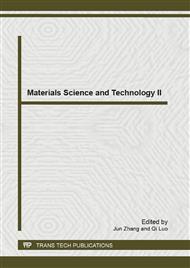p.223
p.228
p.235
p.240
p.244
p.248
p.254
p.261
p.266
Hydrogen Storage in MOF-5 with Fluorine Substitution: A van der Waals Density Functional Theory Study
Abstract:
Physisorption of hydrogen molecules in metal-organic frameworks (MOFs) provides a promising way for hydrogen storage, in which the van der Waals (vdW) interaction plays an important role but cannot be described by the density functional theory (DFT). Using the vdW density functional (vdW-DF) method, we perform ab initio calculations for the MOF-5 crystal with one or multiple H2 adsorbed in its primitive cell. It is found that the binding with the organic linker is much smaller than with the metal oxide corner, which limits the H2 loading. We show that this can be improved significantly (from 5.50 to 10.39 kJ/mol) by replacing the H atoms of the organic linker with F atoms which causes extra electrostatic interaction.
Info:
Periodical:
Pages:
244-247
Citation:
Online since:
July 2013
Authors:
Keywords:
Price:
Сopyright:
© 2013 Trans Tech Publications Ltd. All Rights Reserved
Share:
Citation:


